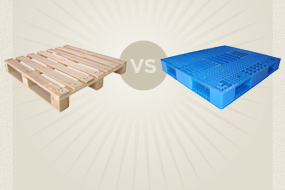Packing Pallets and Preservation: Protecting Your Items with Style
In today's fast-paced world of trade and transportation, the manner we manage and transport goods has turned increasingly crucial than previously. The preservation of products during handling and storage is not just about keeping them safe; it's about preserving quality and ensuring customer contentment. One of the underappreciated heroes in this operation is the pallet. These robust bases play a vital role in the management and transportation of goods, making them necessary in warehouses, retail spaces, and shipping operations.
Apart from their functional purpose, pallets can also improve the look of your storage areas. With the best choice of materials and forms, they not only contribute to effective logistics but can also provide a elegant solution for displaying items. Recognizing the significance of pallets in protecting your products is key to ensuring that your goods are maintained in the optimal condition while also showing them in a manner that reflects your brand's principles.
Choosing the Suitable Pallet
When selecting a pallet, the initial thing to consider should be the category of material that meets your warehousing needs. Wooden pallets are the favored choice due to their robustness and adaptability, but there are also plastic and metal options available. Wooden pallets are great for heavy loads, while plastic pallets provide resistance to moisture and chemicals. Metal pallets, on the contrary, are well-suited for specific environments, offering strength. Grasping the characteristics of these substances can help guarantee that your items are adequately maintained during storage or transport.
Following that, it is important to consider about the load limit necessary for your products. Different pallets have varying load limits, and it's crucial to pick a pallet that can securely support the mass of your goods. Overloading a pallet can lead to breakdown, resulting in damage to both the pallet and your products. Evaluating the weight distribution of your items and choosing a pallet that accommodates those needs is essential for keeping the wholeness of your items.
Finally, think about the measurements and configuration of the pallet. The dimensions should correspond with your warehouse space and the products you intend to transport or hold. Selecting the right configuration can also enhance workflow in arranging and transporting. Typical pallets come in various sizes, but custom options are available if your products have special dimensions. Paying attention to these aspects will not only defend your products but also boost your total efficiency and holding capacity.
Pallets Styles for Aesthetic Attraction

When looking at the storage and management of goods, the artistic attraction of pallets can have a significant role in boosting the overall presentation of a setting. A beautifully crafted pallet can improve the look of a distribution center, retail environment, or even a house. Many organizations are now selecting visually appealing pallet formats that match their branding. Whether finished in bright colors, made from reclaimed wood, or crafted with intricate cuts, these pallets can convert functional storage into chic displays, making them a focal point rather than just a functional item.
Creative pallet designs also facilitate personalization, catering to personal preferences. Companies often utilize branding techniques to make pallets stand out, such as adding logos or particular color schemes that reflect their clients. Tulsa enhances the aesthetic aspect but also enhances brand recognition. Furthermore, the use of versatile pallet configurations can be customized to fit various contexts, whether informal or elegant, maximizing practicality without compromising artistic value.
In addition to their artistic attraction, beautiful pallets can also boost a favorable customer experience. For example, in shops, custom-designed pallets can attract attention and tempt customers to check out products displayed upon them. By integrating style with usefulness, pallets serve not only as essential tools for holding but also as a way to create an appealing atmosphere. Ultimately, a well-crafted pallet brings together aesthetics and utility, improving the setting while protecting goods efficiently.
Best Practices for Pallet Preservation
To ensure the lifespan and effectiveness of pallets, it is important to choose the appropriate materials for their construction. Go for pallets made from strong wood, plastic, or metal, depending on the nature of the goods being stored. Furthermore, consider the environmental conditions in which the pallets will be used. For instance, if the pallets will be exposed to moisture, choose weather-resistant materials to prevent distortion and degradation. Regularly inspect pallets for any signs of deterioration or wear and replace them as needed to maintain a reliable and functional storage environment.
Proper stacking techniques also have a significant role in pallet preservation. When stacking goods on pallets, it is crucial to balance weight evenly to avoid putting excess pressure on any specific area. This assists prevent pallet collapse and potential damage to the contents being stored. Use banding or stretch film to secure items to the pallet, further stabilizing the load. Always comply with the recommended weight limits for each type of pallet to ensure safe handling and storage.
In conclusion, consider setting up a maintenance routine for your pallets. This may include cleaning them regularly to eliminate dirt and contaminants that could cause damage over time. If using wooden pallets, treat them with suitable preservatives to protect against rot and pests. Additionally, set up a system for tracking the age and usage of pallets, which enables timely replacements and repairs as needed. By following these best practices, you can significantly improve the preservation of your goods while optimizing the utility of your pallets.